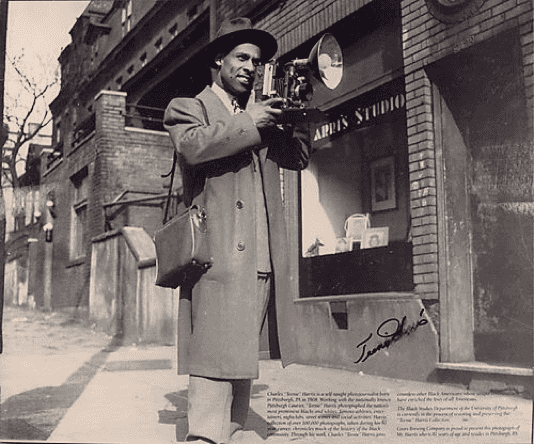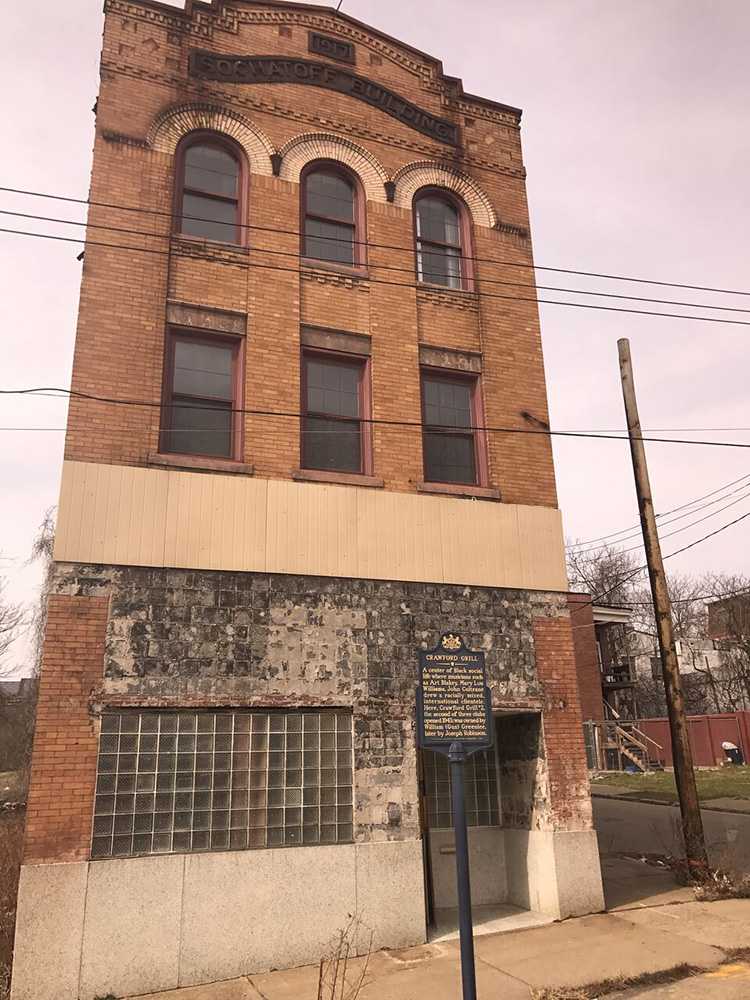Secret Pittsburgh
Two Takes on the Hill
By Everett Benson
I. Jazzin’ it up in the Hills
Let’s travel back to the Hill District in the mid-nineteen-hundreds. The Hills’ were originally home to a predominately Jewish community in the early twentieth-century. By the 1930’s and into the 1950’s the neighborhood blossomed into an eccentric, diverse, and powerful African-American community. The Hill District thrived as a focus for business, art, and music-- drawing in humming crowds both day and night.
Pittsburgh is known for its history of jazz music. One of the most famous jazz institutions was the Crawford Grill. Two of the three locations were in the Hill District. The Crawford Grill was one of the few “black-and-tan clubs.” These venues featured African-American artists and served mixed-race customers. Although the original club had multiple owners, William “Gus” Greenlee is credited for making the club famous.
The Crawford Grill No. 1 (the original club) was located at 1401 Wylie Avenue at Townsend, in a former hotel from 1931 to 1952, until a fire unfortunately burned it down. The third floor of the three-story building was for reserved for VIPs. Known as "Club Crawford," it functioned as Greenlee's reception room and office. The club provided an at-home feel for locals, powerful families, athletes, and celebrities from out of town (including Martin Luther King Jr). The Crawford Grill No. 1 became so popular that Greenlee decided to open another.
The Crawford Grill No. 2 is located at 2141 Wylie Avenue in the Hill District (1943-2003), just ten blocks away from the original location (see Fig. 1). At this location, local and national-recognized acts struck, such as, jazz legends Art Blakey, Miles Davis, John Coltrane, Bill Evans, and Kenney Burrell. During this time, the Hill District was called “The Crossroads of the World” because Pittsburgh fell geographically between New York City and Chicago (the twin giants of “Jazz Age” culture). The Crawford Grill was a huge musical waypoint between the two cities. This site received a historical marker by the Pennsylvania Historical and Museum commission in 2001 for its impact.
The Crawford Grill No. 2 featured a revolving table, upholstered with what appears to be a leather cushion, in the middle of the room topped with a piano dressed in mirrors and a glass-topped bar. The Grill’s extravagant charms attracted the hottest Jazz artists such as Ella Fitzgerald, Louis Armstrong, Dizzy Gillespie, Billy Eckstine and Stanley Turrentine.
Jazz music and the Crawford Grill was an inspiration for world renound playwright, August Wilson. In the preface of August Wilson Three Plays, Wilson talks about his experience with the blues:
With my discovery of Bessie Smith and the blues I had been given a world that contained my image, a world at once rich and varied, marked and marking, brutal and beautiful, and at crucial odds with the larger world that contained it and preyed and pressed it from every conceivable angle. (ix)
Jazz and the blues are tightly coupled genres in the musical world. To August Wilson, the blues was an outlet to his creative mind, guiding him to the production of his famous plays. The Crawford Grill was referenced in his play, Fences, as well as the incorporation of jazz music.
After the Crawford Grill No. 2 closed, building owner Buzzy Robinson looked for buyers who would appreciate the legacy of the site. In 2010, local informants announced that an investment group including Pittsburgh Central Keystone Innovation Zone, Pittsburgh Gateways Corporation, Hill House EDC, and several private investors (including Steelers Hall of Fame running back Franco Harris) had purchased the building for $275,000. They called their initiative the "Crawford Grill Revitalization Project." The group has indicated it aims to preserve the legacy of the space through restoration efforts and the launch of a new restaurant and nightclub.
Six years later and there were no obvious signs of renovation. Eric Heyl from Trib LIVE interviewed Jessica Lee, vice president and program director of Pittsburgh Gateways as well as a local jazz and blues vocalist. She says, “It’s all about finding the money to do it right.” The owners are looking to raise about $3 million dollars to properly renovate the building. “It’s about bringing back the Crawford Grill in a viable and sustainable way.” Hopefully, soon we will see the Crawford Grill back up, running, and playing jazz music as intended.
II. “One Shot”
Charles “Teenie” Harris (see Fig. 2) is known for his dedication to capture what it’s like to live in the Hill District and other surrounding neighborhoods for African-Americans. Producing more than 100,000 pictures during his career, many efforts are made to preserve his work in historical archives.
Harris was a semi-pro athlete and a numbers runner before he obtained his first camera in the 1930s. Harris opened his own photography studio, specializing in glamour portraits. He eventually was nicknamed “One Shot” because he rarely had his subjects sit for a retake. This is really interesting because during Harris’ era, one picture was time consuming and costed money. Current photographers (no insult to them) can take one, two, even ten pictures of the same thing until they get it just as they want it. Charles “Teenie” Harris didn’t need to do that.
Harris’ photos fall into “The Trialectics of Being” and “The Trialectics of Spatiality” described in Edward Soja’s, Thirdspace: Journeys to Lost Angeles and Other Real-and-Imagined Places. By knowing the history and legacy of the Hill District during this era, Harris’ photographs fulfill history, social aspects, and the space of being. When visiting the spaces where Harris took his photos, one can experience the perceived, conceived, and lived space.
Harris additionally freelanced for the Washington, D.C. news picture magazine, Flash!, as well as the Pittsburgh Courier, one of America’s oldest African-American newspapers. After closing his studio in 1953, Harris’ photos captured the late Jim Crow and Civil Rights eras over the next 20 years.
Currently, Teenie’s archived collection is proudly displayed in the Carnegie Museum of Art. He is most reminisced for his shots of daily life—urban landscapes, social gatherings, musical events, and sports from boxing to Negro League baseball. Harris also captured the rise and fall of the Crawford Grill. His effort to capture the history of African-American lives in the Hill District community, as well as the City of Pittsburgh, led to the declaration of “Teenie” Harris Day by the City of Pittsburgh and Allegheny County on January 15th, 2009. You can find Harris’ archived photos and more at http://teenie.cmoa.org .

